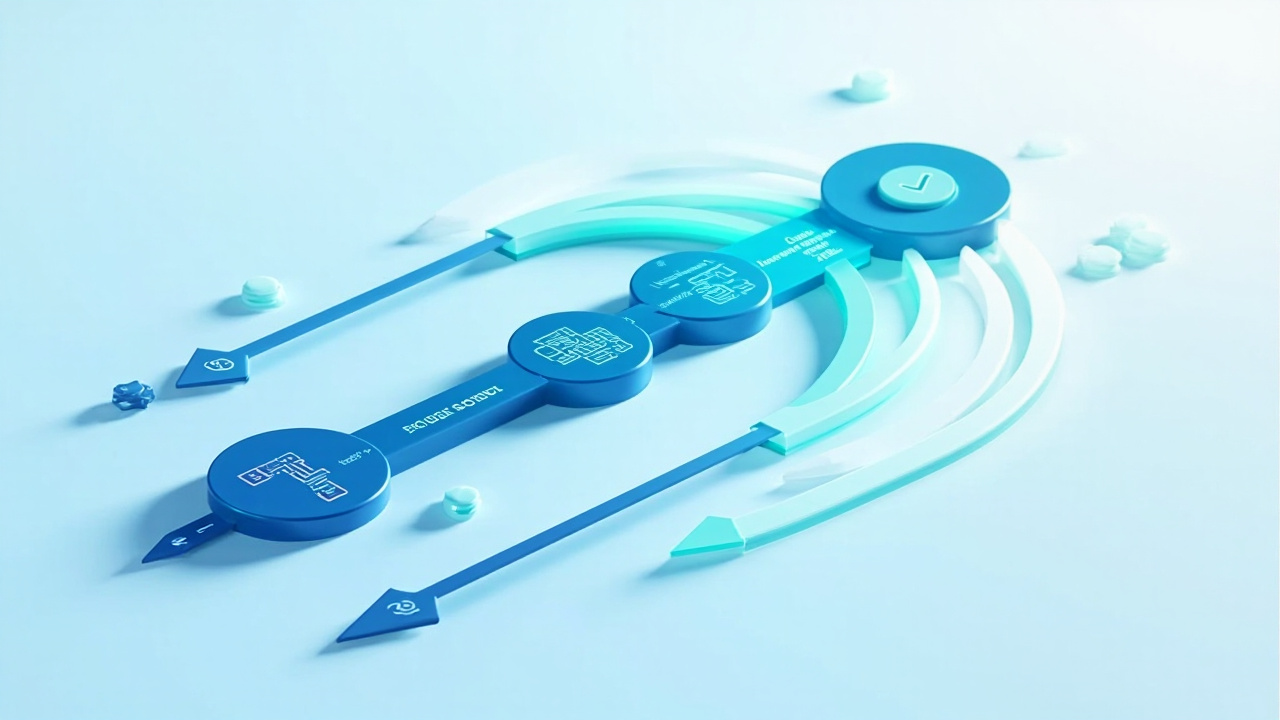In today’s fast-paced digital world, software is at the heart of almost every business operation. Whether it’s a sleek mobile application or a robust enterprise solution, the quality of software can make or break a company’s reputation. Yet, as software grows in complexity, so too does the challenge of ensuring its quality. Traditional software testing methods, while foundational, often fall short in addressing the nuanced demands of modern software development. But fear not this comprehensive guide will walk you through the intricate world of software testing, revealing strategies that can help you ensure your software is reliable, efficient, and user-friendly.
Software testing is not merely a phase in the development cycle; it’s a continuous process that ensures each line of code performs as intended. However, the landscape of software testing is evolving. With agile development methodologies and continuous integration/continuous deployment (CI/CD) pipelines, testing must be faster and more integrated than ever before. This transformation presents both challenges and opportunities for quality assurance (QA) teams. How can testers keep pace with rapid releases? What tools and strategies can they employ to maintain high standards of quality?
Amidst this evolving landscape, artificial intelligence (AI) is emerging as a game-changer. Tools like GenQE are revolutionizing software testing by introducing AI-powered efficiency and accuracy. By leveraging machine learning, these tools can automate test generation, execution, and defect detection, allowing testers to focus on more strategic aspects of quality engineering. As we delve into the world of software testing, we’ll explore how AI and other innovative solutions are reshaping the way we approach software quality assurance.
Understanding the Fundamentals of Software Testing

Software testing is a critical component of the software development lifecycle (SDLC). It involves evaluating a software application to ensure it meets the specified requirements and is free of defects. While the primary goal of software testing is to identify bugs, its importance extends beyond mere defect detection.
The Objectives of Software Testing
At its core, software testing aims to ensure that a product is functional, reliable, and user-friendly. Its objectives include
- Verification of Functionality: Ensuring that the software behaves as expected and meets user requirements. Quality Assurance: Identifying defects and ensuring that the software is free of bugs before release. Performance Evaluation: Assessing the software’s performance under various conditions to ensure it meets the desired standards. User Satisfaction: Ensuring that the software provides a seamless and intuitive user experience.
“Quality is not an act, it is a habit.” – Aristotle
Types of Software Testing
There are several types of software testing, each serving a unique purpose
- Unit Testing: Focuses on individual components or units of the software to ensure they work as intended. Integration Testing: Examines how different modules interact with each other. System Testing: Evaluates the complete system as a whole to ensure it meets the specified requirements. User Acceptance Testing (UAT): Conducted by end-users to ensure the software is ready for production.
Challenges in Traditional Software Testing
Traditional software testing faces several challenges, including
- Manual Effort: Manual testing is time-consuming and prone to human error. Limited Test Coverage: Ensuring comprehensive test coverage can be difficult. Resource Constraints: Testing often requires significant resources in terms of time, personnel, and infrastructure.
As we move forward, we’ll explore how innovative solutions like GenQE are addressing these challenges and enhancing the software testing process.
The Role of Automation in Modern Software Testing

Automation has become a cornerstone of modern software testing, offering significant advantages over manual testing. By automating repetitive and time-consuming tasks, QA teams can focus on more strategic aspects of testing, such as exploratory testing and test strategy development.
Benefits of Test Automation
Test automation offers several key benefits
- Increased Efficiency: Automated tests can be executed faster and more frequently than manual tests, allowing for rapid feedback and faster release cycles. Consistency and Accuracy: Automated tests are consistent in their execution, reducing the risk of human error. Scalability: Automated testing can easily scale to accommodate large and complex test suites.
“Automation applied to an inefficient operation will magnify the inefficiency.” – Bill Gates
Tools and Technologies for Test Automation
Numerous tools are available to support test automation, each with its own strengths and limitations
- Selenium: A popular open-source tool for automating web applications. Appium: Used for automating mobile applications across different platforms. JUnit and TestNG: Frameworks for automating unit tests in Java.
The Rise of AI in Test Automation
AI is transforming the landscape of test automation by introducing capabilities that were previously unimaginable. Tools like GenQE leverage AI to automate test generation and execution, reducing manual effort and improving test coverage. By analyzing software requirements and user behavior, AI can generate intelligent test cases that adapt to changing software environments.
As we move forward, we’ll explore how AI-driven tools like GenQE are enhancing test automation and addressing the limitations of traditional approaches.
Leveraging AI for Intelligent Test Case Generation

The process of test case generation is critical to software testing, as it determines the scope and effectiveness of the testing effort. However, creating effective test cases can be labor-intensive and challenging, particularly in complex software environments. This is where AI-powered tools like GenQE come into play.
The Complexity of Test Case Generation
Test case generation involves creating a set of conditions or variables to test a particular functionality of the software. It requires a thorough understanding of the software requirements and user behavior. However, several factors complicate this process
- Dynamic Requirements: Software requirements often change throughout the development cycle, necessitating constant updates to test cases. Diverse Scenarios: Effective testing requires simulating a wide range of user scenarios, which can be difficult to comprehensively cover. Resource Limitations: Manual test case design is resource-intensive, requiring significant time and expertise.
AI-Driven Test Case Generation with GenQE
GenQE addresses these challenges by leveraging AI to automate the test case generation process. By analyzing software requirements, user behavior, and historical data, GenQE can intelligently generate and prioritize test cases, ensuring comprehensive coverage and optimal efficiency. This approach reduces the dependency on manual test case design and allows QA teams to focus on more strategic aspects of testing.
Practical Applications and Benefits
The use of AI-driven test case generation offers several practical benefits
- Improved Test Coverage: AI can identify and generate test cases for scenarios that may be overlooked in manual testing. Reduced Manual Effort: Automating test case generation reduces the time and effort required for test design. Adaptive Testing: AI-driven test cases can adapt to changes in software requirements, ensuring ongoing relevance and effectiveness.
As we continue, we’ll explore how AI is revolutionizing test execution and defect detection, further enhancing the software testing process.
Enhancing Test Execution with AI and Automation

Test execution is a critical phase in the software testing process, where test cases are executed to validate the functionality and performance of the software. Traditionally, test execution involved significant manual effort, but automation and AI are changing the game.
Challenges in Traditional Test Execution
Traditional test execution faces several challenges
- Time-Consuming Processes: Manual test execution can be slow and labor-intensive, leading to delays in the testing process. Inconsistent Results: Human error can result in inconsistent test execution and unreliable results. Limited Scalability: Manual test execution is difficult to scale, particularly for large and complex test suites.
AI-Driven Test Execution with GenQE
GenQE enhances test execution by introducing AI-driven capabilities that improve efficiency and accuracy. By intelligently prioritizing and executing test cases based on risk analysis, GenQE ensures that critical areas are tested first, optimizing testing efforts and focusing on high-impact defects. This approach not only accelerates the testing process but also improves the reliability of test results.
“Testing leads to failure, and failure leads to understanding.” – Burt Rutan
Advantages of AI-Driven Test Execution
AI-driven test execution offers several advantages
- Faster Feedback Loops: Automated test execution provides rapid feedback, enabling quicker identification and resolution of defects. Consistent and Reliable Results: AI-driven execution eliminates human error, ensuring consistent and accurate test results. Scalability: Automated execution can easily scale to accommodate large test suites and complex scenarios.
As we proceed, we’ll explore how AI is transforming defect detection and analysis, providing insights that drive continuous improvement in software quality.
Revolutionizing Defect Detection and Analysis with AI

Defect detection is a critical aspect of software testing, as it identifies issues that could impact the software’s functionality, performance, or user experience. However, traditional defect detection methods often struggle to keep pace with the complexity and speed of modern software development.
Limitations of Traditional Defect Detection
Traditional defect detection methods face several limitations
- Reactive Approach: Defects are often detected late in the development cycle, leading to costly rework and delays. Limited Insight: Manual defect analysis may overlook patterns or root causes, leading to incomplete resolutions. Resource Intensive: Defect detection and analysis require significant time and expertise.
AI-Powered Defect Detection with GenQE
GenQE leverages AI to revolutionize defect detection and analysis, offering a proactive and intelligent approach. By analyzing patterns in test results, GenQE can detect anomalies and potential defects early in the development cycle, preventing critical issues from reaching production. This proactive approach not only improves software quality but also reduces the cost and effort associated with defect resolution.
The Benefits of AI-Driven Defect Detection
AI-driven defect detection offers several key benefits
- Early Detection: AI can identify defects early in the development cycle, reducing the cost and impact of defect resolution. Comprehensive Analysis: AI-driven analysis provides deeper insights into defect patterns and root causes, enabling more effective resolutions. Continuous Improvement: AI-driven insights support continuous improvement in testing processes and software quality.
“The bitterness of poor quality remains long after the sweetness of meeting the schedule has been forgotten.” – Karl Wiegers
As we transition to the next section, we’ll explore how testing integrates with DevOps and CI/CD pipelines, creating a seamless and efficient development process.
Seamless Integration of Testing with DevOps and CI/CD

In the world of modern software development, DevOps and CI/CD pipelines have become essential for delivering high-quality software quickly and efficiently. Integrating testing into these pipelines is crucial to ensure that quality is maintained throughout the development lifecycle.
The Importance of Integration
Integrating testing with DevOps and CI/CD offers several benefits
- Faster Release Cycles: Continuous testing within CI/CD pipelines enables rapid feedback and quicker release cycles. Improved Quality: Automated testing ensures that quality checks are performed consistently throughout the development process. Collaboration and Communication: Integration fosters collaboration between development and QA teams, enhancing communication and alignment.
Tools and Technologies for Integration
Several tools support the integration of testing with DevOps and CI/CD pipelines
- Jenkins: A popular CI/CD tool that automates the build and testing process. GitHub Actions: Provides automation for CI/CD workflows directly from GitHub. Azure DevOps: Offers comprehensive support for CI/CD pipelines and testing.
AI-Driven Integration with GenQE
GenQE seamlessly integrates with CI/CD tools like Jenkins, GitHub Actions, and Azure DevOps, ensuring that automated testing is a seamless part of the development pipeline. This integration not only accelerates release cycles but also enhances software quality by ensuring that testing is an integral part of the development process.
As we conclude our exploration of software testing, we’ll summarize the key takeaways and highlight the future of testing in an AI-driven world.
Conclusion: Embracing the Future of Software Testing with AI

As we conclude our journey through the world of software testing, it’s clear that the landscape is evolving rapidly. Traditional testing methods, while foundational, are no longer sufficient to meet the demands of modern software development. The integration of AI and automation is transforming the testing process, offering new levels of efficiency, accuracy, and insight.
AI-powered tools like GenQE are leading the charge, providing intelligent solutions that enhance test automation, execution, and defect detection. By leveraging AI, QA teams can focus on more strategic aspects of testing, driving continuous improvement in software quality.
For organizations looking to stay ahead in the competitive software market, embracing AI-driven testing is not just an option it’s a necessity. By integrating tools like GenQE into their testing processes, companies can ensure that their software is reliable, efficient, and ready to meet the challenges of an ever-changing digital landscape.
“The best preparation for tomorrow is doing your best today.” – H. Jackson Brown Jr.
As you explore the tools and strategies discussed in this guide, consider how AI-driven solutions can enhance your testing processes and improve software quality. The future of software testing is here, and it’s powered by AI.
In conclusion, the world of software testing is at an exciting juncture, with AI and automation offering new possibilities for enhancing quality and efficiency. By embracing these innovations and integrating them into your development processes, you can ensure that your software is ready to meet the demands of the future. Explore the tools and strategies discussed in this guide, and take the first step towards revolutionizing your software testing journey.
Discover More Innovative Solutions
Want to learn more about the tools and technologies discussed in this article? Explore how these innovations can be tailored to your specific needs and workflow requirements.
Our team of experts is available to answer your questions and provide personalized insights into how modern solutions like GenQE can address your specific challenges.
If the link above does not work, please visit: https://calendly.com/dm-csimplifyit/30min?month=2025-05